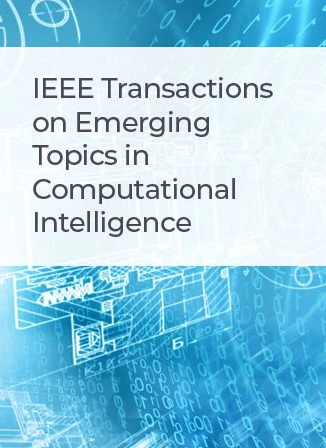MssNet: An Efficient Spatial Attention Model for Early Recognition of Alzheimer's Disease
IF 5.3
3区 计算机科学
Q1 COMPUTER SCIENCE, ARTIFICIAL INTELLIGENCE
IEEE Transactions on Emerging Topics in Computational Intelligence
Pub Date : 2025-02-19
DOI:10.1109/TETCI.2025.3537942
引用次数: 0
Abstract
Deep learning models are widely used in medical image-guided disease recognition and have achieved outstanding performance. Voxel-based models are typically the default choice for deep learning-based MRI analysis, which require high computational resources and large data volumes, making them inefficient for rapid disease screening. Simultaneously, the existing Alzheimer's disease (AD) recognition model is primarily comprised of Convolutional Neural Network (CNN) structures. With the increasing of the network depth, the fine-grained details of global features tend to be partially lost. Therefore, we propose a Multi-scale spatial self-attention Network (MssNet) that effectively captures both coarse-grained and fine-grained features. We design to select the target slice based on image entropy to achieve efficient slice-based AD recognition. To capture multi-level spatial information, a novel spatial attention mechanism and spatial self-attention attention are designed. The former is utilized to collect critical spatial information and identify areas that are likely to be lesions, the latter investigates the relationship between features in different image regions through spatial interaction by pure convolutional blocks. MssNet fully utilizes multi-scale information at different granularities for spatial feature interaction, providing it with strong modeling and information understanding capabilities. It has achieved excellent performance in the recognition tasks of Alzheimer's Disease Neuroimaging Initiative (ADNI) and Open Access Series of Imaging Studies (OASIS) datasets. Moreover, MssNet is a lightweight model involving lower scale parameters against the Voxel-based ones, while demonstrating strong generalization capability.MssNet:早期识别阿尔茨海默病的有效空间注意模型
深度学习模型在医学图像引导疾病识别中得到了广泛的应用,并取得了优异的成绩。基于体素的模型通常是基于深度学习的MRI分析的默认选择,这需要高计算资源和大数据量,使得它们在快速疾病筛查方面效率低下。同时,现有的阿尔茨海默病(AD)识别模型主要由卷积神经网络(CNN)结构组成。随着网络深度的增加,全局特征的细粒度细节往往会部分丢失。因此,我们提出了一个能有效捕获粗粒度和细粒度特征的多尺度空间自注意网络(MssNet)。我们设计了基于图像熵的目标切片选择,以实现高效的基于切片的AD识别。为了捕获多层次的空间信息,设计了一种新的空间注意机制和空间自注意注意。前者用于收集关键空间信息,识别可能发生病变的区域,后者通过纯卷积块的空间交互来研究不同图像区域中特征之间的关系。MssNet充分利用不同粒度的多尺度信息进行空间特征交互,具有较强的建模和信息理解能力。它在阿尔茨海默病神经成像倡议(ADNI)和开放获取系列成像研究(OASIS)数据集的识别任务中取得了优异的表现。此外,与基于体素的模型相比,MssNet是一个轻量级模型,涉及更低的尺度参数,同时显示出强大的泛化能力。
本文章由计算机程序翻译,如有差异,请以英文原文为准。
求助全文
约1分钟内获得全文
求助全文
来源期刊

IEEE Transactions on Emerging Topics in Computational Intelligence
Mathematics-Control and Optimization
CiteScore
10.30
自引率
7.50%
发文量
147
期刊介绍:
The IEEE Transactions on Emerging Topics in Computational Intelligence (TETCI) publishes original articles on emerging aspects of computational intelligence, including theory, applications, and surveys.
TETCI is an electronics only publication. TETCI publishes six issues per year.
Authors are encouraged to submit manuscripts in any emerging topic in computational intelligence, especially nature-inspired computing topics not covered by other IEEE Computational Intelligence Society journals. A few such illustrative examples are glial cell networks, computational neuroscience, Brain Computer Interface, ambient intelligence, non-fuzzy computing with words, artificial life, cultural learning, artificial endocrine networks, social reasoning, artificial hormone networks, computational intelligence for the IoT and Smart-X technologies.
 求助内容:
求助内容: 应助结果提醒方式:
应助结果提醒方式:


